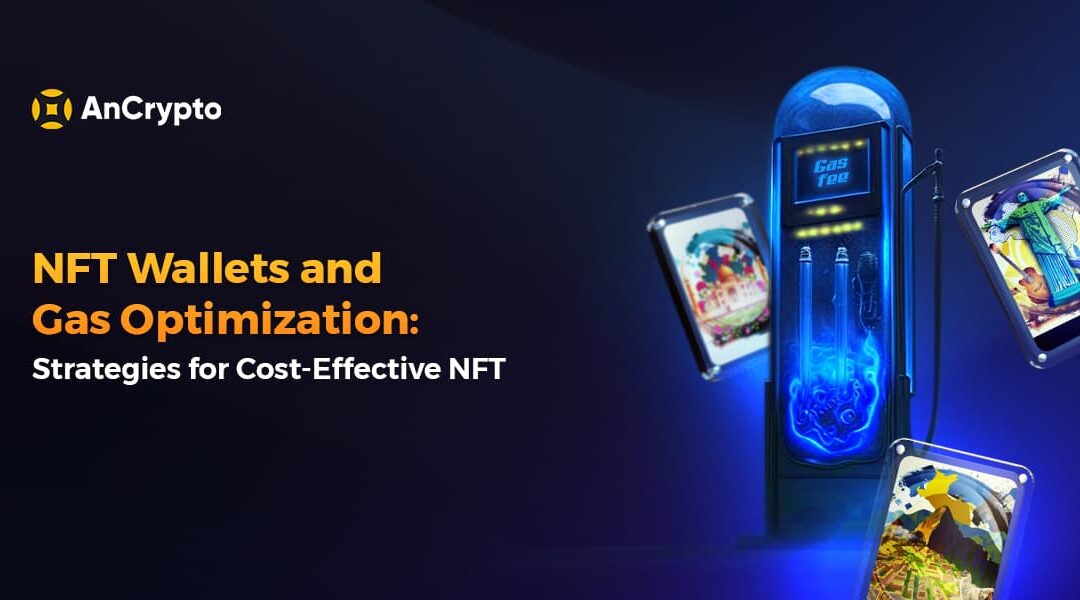
Sep 12, 2023
Since the rise of NFTs (Non-fungible tokens), numerous creators and artists are looking upto the blockchain ecosystem to monetize their efforts and secure ownership of their assets. Evidently, the NFT market is now thriving across several industries like gaming, art, virtual real estate, and fashion. As per the latest statistics, more than 10,000 wallets interact with NFTs on a daily basis.
However, similar to cryptocurrency transactions, there is a certain amount of expense associated with buying, selling, and transferring NFTs. Gas fee forms a major part of such transactions, and it generally varies depending upon a number of factors like network congestion, blockchain, etc. If you are interested in trading via your NFT wallet, you would want to know the best techniques for conducting cost-effective transactions.
This article throws light on the concept of gas fees and possible optimization strategies, that can be utilized by wallet users.
Gas Fee Dynamics in Relation to NFT Wallets
To complete transactions on a blockchain, users need to pay charges, called gas fees. This monetary investment is basically for the miners, who are involved in computations and related meticulous operations that lead to validation, and ultimate inclusion of the transaction in the blockchain.
The primary determinants of the magnitude of gas fees are: the size of the transaction, the network traffic, and the particular blockchain. Clearly, the cost increases with the network traffic and size of the block to be added.
These expenses are then distributed to validators as payment for their assistance in confirming and assuring the successful completion of your transaction. In essence, gas prices are necessary to maintain the authentication of transactions, as well as the security and operational effectiveness of a blockchain.
NFT wallets essentially serve as storage places to keep your digital collectibles and share them with other users. Using these apps, users can securely connect to NFT marketplaces and get the entire fee details of the associated transactions. Your choice of a DeFi wallet depends upon whether you wish to carry out transactions on a single blockchain or several blockchains, the accessibility of purchased NFTs, the versatility of the user interface, and similar other parameters.
Cost-Saving Tactics for Economical NFT Transactions
In peak network traffic hours, wallet users find it difficult to buy and conduct other NFT transfers, owing to high cost and slow processing. And if you are a newbie and unaware of the optimal practices to save expenses, you can end up paying much more than the NFT’s actual worth!
After diligent research, our experts have come up with the following strategies for gas fee optimization, to help NFT wallet users:
- Look for Non-Peak Hours:
The time of transactions does make a good difference as to how much you pay for them. So, it is advisable to carry out NFT transactions during low activity hours, when the network is less congested. Based on demand and network congestion, gas prices vary dramatically on most blockchains. You can use gas fee trackers to stay informed of the times when there is less activity, and complete transactions in those hours.
- Go for the Suitable Blockchains:
The charges for transacting tokens differ from blockchain to blockchain. For instance, the popular blockchain Ethereum usually imposes high gas fee, compared to other blockchains like Polygon. So, it is important to learn about the cost structure of the blockchain, before investing and trading its NFTs.
- Utilize the Right Tools:
It is a good idea to purchase NFTs from marketplaces with gas-saving tools and trading discounts. Every marketplace has different fee criteria and you can compare different options before trading. Further, there are several wallet apps, that offer secure NFT storage and means to connect safely to marketplaces. You must examine and check the reliability of these platforms, prior to investing your finances.
- Combine Transactions:
Another way to cut down on gas expenses is to do conduct several NFT transactions as one. This reduces the per-NFT gas cost, relative to the case where you transact many transactions separately. In other words, batching NFT transactions makes the whole process cost-effective and energy-efficient.
- Opt for Peer-to-Peer Transactions:
Some platforms charge additional costs, apart from the gas fee levied for blockchain operations. In such a case, you can choose to transact via Peer-to-peer (P2P) mode. This will help you avoid or minimize platform costs and extend you a better choice of the gas fees.
- Try out Gas Tokens:
Certain platforms have their own gas tokens, which works as a great cost-cutting technique for users, who are regular investors or traders. For example, MATIC, the native token of Polygon, is also a gas token.
Layer-2 scaling solutions and similar roll-ups are known to substantially lower gas costs and transaction confirmation times.
- Use Optimization Tools:
Some platforms extend options for gas fee restrictions, and let you alter a set of parameters so as to modify the total gas fee. Besides, you can also employ low-budget wallets to buy NFTs, so as to keep your finances in check. and techniques that assist in gas usage optimization. Wherever possible, try to utilize gas price estimators and optimizers to decide on the best costs before doing transactions.
- HODL and Trade Later:
Finally, you need to invest and trade wisely, alongside keeping up with latest developments in NFT market. For instance, diversified portfolios perform quite well, and can stand bad times. In the times of declining market trends, you may want to stop the habit of frequent buying and selling, and instead hold NFTs for a long period, to spread out the cost of transactions over time.
AnCrypto – The One-Stop NFT Storage Solution
One of the best crypto wallets, AnCrypto is the first kind of chat wallet, which facilitates secure storage and sharing of NFTs through a single unified dashboard. It is a multi-chain wallet, that supports NFTs on the Binance, Polygon, and Ethereum. Moreover, the wallet works on ERC-721 and ERC-1155 protocols for streamlined management of NFTs and other crypto assets.
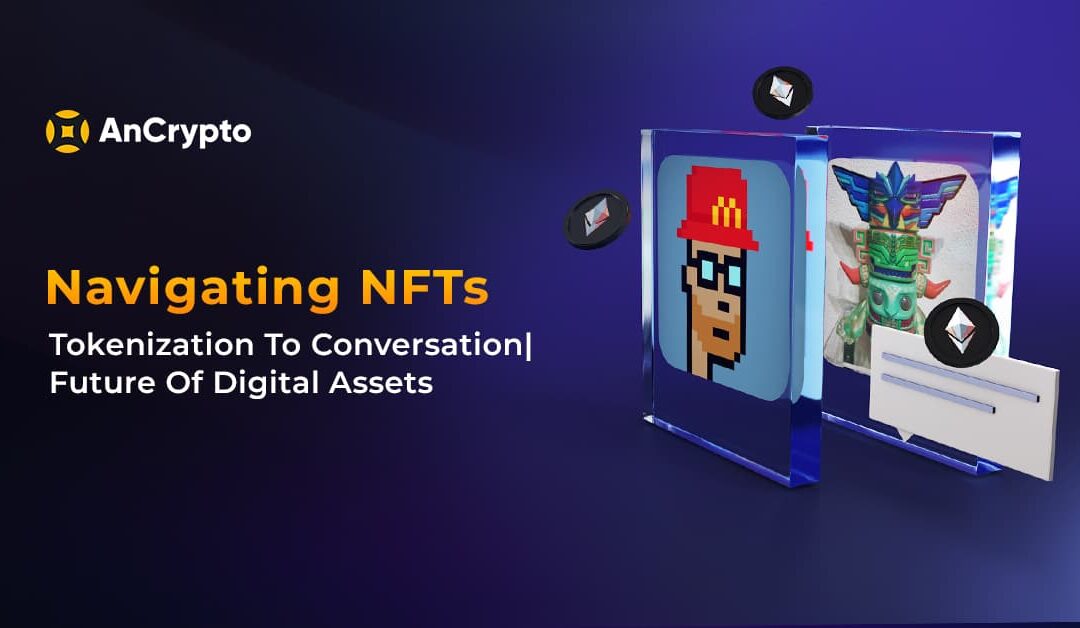
Sep 7, 2023
The asset tokenization trend is ruling across the cryptocurrency community. Non-fungible tokens (NFTs), a creative approach to asset creation, management, and trading, are at the forefront of this transformation. The best wallet for NFT, AnCrypto, offers two token standards, ERC-721 and ERC-1155. As technology advances, AnCrypto wallet for NFTs will take the lead in bringing significant change by upending long-standing practices of sharing NFTs using traditional addresses.
In this guide, we will explore the significance of AnCrypto’s dual token standards and the upcoming “Chat and Pay” feature.
Know About The Tokenization
Tokenization, in simple words, is the process of transforming ownership of an asset into a digital token. These tokens are then stored in the Blockchain network making every transaction transparent and safe.
Unique digital assets known as NFTs, a subtype of tokenization, serve as proof of ownership or validity for a particular art, piece of content, or event. NFTs are perfect for representing things like digital art, collectibles, virtual real estate, and more since they are different and non-interchangeable.
AnCrypto: Unlocking New Opportunities With ERC-721 and ERC-1155
AnCrypto distinguishes itself as the best NFT wallet in the market supporting two token standards, ERC-721 and ERC-1155.
ERC-721: Non-Fungible Tokens (NFTs) Standard
Ethereum ecosystem lies the ERC721 standard, a fundamental building block that underpins the world of Non-Fungible Tokens (NFTs). When we mention “ERC721,” we are not just talking about the smart contracts themselves but also about the tokens that follow this specific standard. The standard ensures that tokens in the ERC721 contract follow the defined set of rules and provide certain essential functionalities.
This standard accomplishes its mission by guaranteeing the following core principles:
- Transferability:
ERC721 tokens are designed to be transferred seamlessly between different accounts. This transferability is crucial in the NFT world, where unique digital assets change hands securely and transparently.
- Balances:
The standard ensures that users can effortlessly check the credits of ERC721 tokens in their possession. This transparency is essential for tracking and managing NFT collections effectively.
- Total Supply:
ERC721 enables anyone to determine the total supply of a specific token. This feature is particularly valuable for collectors and investors who want to understand the scarcity and value of a particular NFT.
As AnCrypto supports ERC-721, users can safely manage and exchange their one-of-a-kind NFTs using this multi-chain crypto DeFi wallet.
ERC 1155- The Standard For All Tokens
ERC1155 goes beyond Non-Fungible Tokens (NFTs). It encompasses Fungible Tokens (FTs) and Semi-Fungible Tokens (SFTs) as well, making it the first standard to handle multiple token types seamlessly. This universal token standard allows different token types to coexist within a single instance.
Just like “ERC721,” when we say “ERC1155,” we’re referring to both the smart contracts and the tokens that adhere to this versatile standard.
This token standard draws inspiration from various existing token standards, notably ERC20 and ERC721. ERC1155 contracts unite NFTs and FTs under one roof, enabling a single agreement to manage diverse tokens. This consolidation not only reduces the number of smart contracts in circulation but also minimizes transaction volume, unlocking the full potential of NFTs.
It empowers users to create new tokenized items without deploying fresh contracts, a feature that NFT marketplaces leverage for efficient “lazy” minting, taking blockchain development to new heights.
AnCrypto’s implementation of ERC-1155 means users can interact with a wide variety of digital assets, from unique NFTs to fungible tokens, all within the same wallet.
Another Exciting Innovation On Its Way: NFT Chat and Pay
To share the unique and friendly NFT experience, AnCrypto has added NFT chat and pay capabilities to its wallet. This feature makes it simpler than ever to participate in NFT transactions.
Imagine speaking with an NFT holder right from your wallet inbox while maintaining the security and transparency of a blockchain transaction. You can initiate send/receive requests from the “Chat” box, ask about the NFT history, discuss its specifics, and make instant transfers without requiring the wallet address- thanks to the NFT Chat and Pay feature, enabling you to do multichain NFT transfers without putting many efforts.
The “Chat and Pay” feature is already here! Download the AnCrypto app and explore the whole new exciting NFT world.
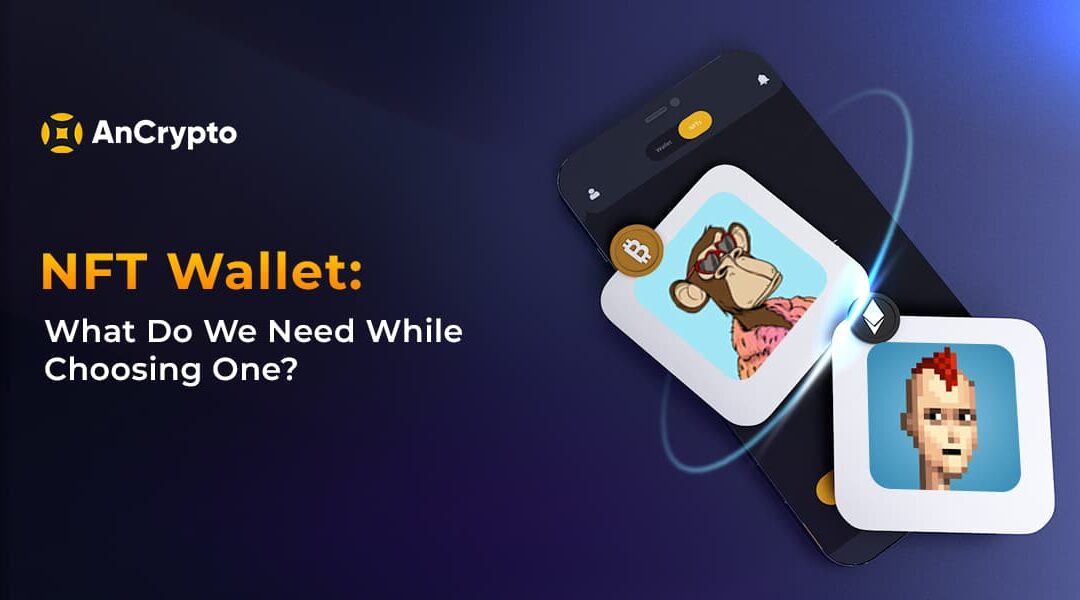
Sep 1, 2023
In this Web3 generation, everything seems much more secure and manageable with NFTs aka Non-Fungible Tokens. NFTs have proven to be an amazing way of tokenizing digital and real-world assets with unique value and designating ownership. As the name suggests, NFTs are non-fungible, which means they are not interchangeable.
Because NFTs are new, many users struggle to find a way to securely store and interact with them after the purchase. Here, we will explore the significance of NFT wallets in securely storing and managing non-fungible tokens.
What Are NFT Wallets?
NFT wallets are digital wallets designed to buy, sell, store, interact, and manage non-fungible tokens. These wallets provide a secure environment to store NFTs and execute transactions, for example- storing, selling/purchasing, and trading on different NFT marketplaces.
The wallet also provides the user with a detailed record of ownership history, showcasing the NFT art, managing the portfolio, and sometimes even integrating with decentralized applications (DApps) that leverage tokens for various purposes- from gaming to digital collectibles.
Why Do We Need The NFT Wallet?
NFT wallet is essential as it determines the security and accessibility of your non-fungible tokens in the Web3 world. NFTs can belong to different Blockchain networks, such as Binance SmartChain or Ethereum, and to interact with their respective NFT ecosystem, you need the NFT wallet. It also contributes to:
- Buy/Sell/Share NFTs
You need an NFT wallet to Buy, Sell, and share NFTs with anyone on the Blockchain network.
- Secure Asset Storage
NFTs can be worth millions, so it is crucial to securely store them. NFT wallet helps to protect the tokens against the ever-present threat of hackers and manage them together in one place.
- Send/Receive NFTs
Making instant NFT transfers on multiple blockchains is possible with the NFT wallet. It helps to synchronize the NFT transactions in real time across different networks.
How To Find The Best NFT Wallet?
Here are some points that can help you find the finest wallet for your NFT storage.
Security:
When it comes to NFTs, security is non-negotiable. Keep an eye out for the following security features.
- Private Keys:
The NFT wallet must give you complete control over your private keys, which means you are the only owner of your keys, and all the assets are under your control.
- End-To-End Encryption:
For added security, look for a wallet that supports end-to-end encryption.
- PIN and Biometric Authentication:
The wallet must support multiple authentication methods for added security(e.g., PIN, password, fingerprint, or facial recognition).
- Reputation:
Check the wallet’s reputation among the NFT community. Look for user reviews and testimonials to determine its credibility.
Interoperability
Your wallet must be compatible with NFT marketplaces and platforms. It will help you to streamline NFT transactions by buying, selling, storing, and trading NFTs without leaving the interface.
- Check if the wallet supports the platforms you wish to use.
- Check the list of dApps compatible with your wallet.
Backup and Recovery
What if you forget the password to your wallet? Choose the one that gives the backup and recovery option, as it can help to avoid uncertainties.
Multi-Chain Support
Consider choosing the one having multichain capabilities to accommodate the diverse non-fungible token transactions.
User-Interface
Having a user-friendly interface is an essential characteristic of the best crypto wallet for NFT. The wallet should be easy to set up and use. Choose the one that enables you to securely view, organize, manage, and categorize the NFTs. The design must be intuitive enough the cater to newcomers and experienced users. If the wallet has filter or customization options for the NFT collection, consider it a plus.
For an avid NFT collector, having a multichain crypto wallet for NFT is paramount. While choosing the NFT wallet, carefully examine the above essentials to make an informed decision.
Keep Your NFT Portfolio Safe & Secure With AnCrypto Wallet
AnCrypto is the safest non-custodial NFT Wallet that enables you to track, store and share NFTs with anyone. With multi-chain support and the latest security features, AnCrypto makes sure that only you have access to your NFTs across various Blockchains.
Following the simple onboarding process, you can create an account on AnCrypto wallet, and store your diverse digital collection together.
Simple NFT Management
With the AnCrypto app, you can manage your NFT collection efficiently in a customized portfolio, and display it in an organized manner. No more hassle of switching between wallets or applications, get the app and keep track of all the digital collectibles in one place.
Easily ADD New NFTs
Use our multi-chain wallet to easily add new NFTs to your collection by following three simple steps. With its user-friendly interface, clear instructions, and simple navigation, AnCrypto offers an easy way to control the NFT collection.
Share NFTs with Anyone
You do not need to rely upon multiple platforms to share the NFTs. AnCrypto supports the straightforward process of sharing NFTs with anyone.
Download Next Generation Web3 NFT Wallet- AnCrypto
Use our web3 wallet to interact with NFT enabled- DApps, and marketplaces. Connect to any of them to buy/sell NFTs, and store them together in one app. Download AnCrypto to take control of your digital collection like never before!
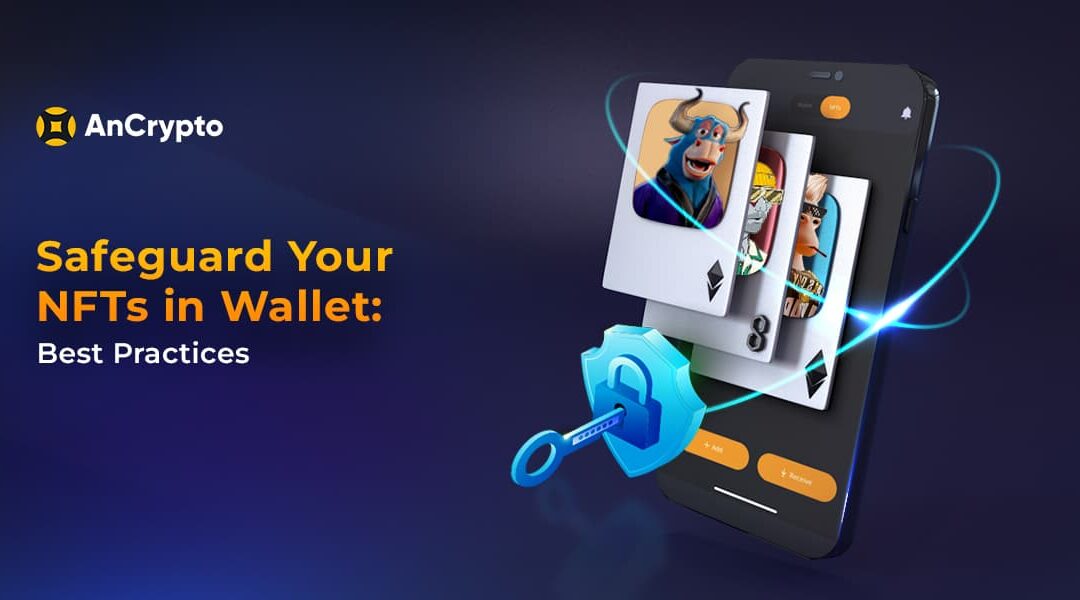
Aug 18, 2023
Ensuring the security of our valuable crypto holdings must be topmost priority. While doing so, it is crucial to recognize that the focus should not be solely on prominent cryptocurrencies or fungible tokens, NFTs are equally susceptible to online threats and malicious attacks. However, maintaining the security of NFts can be complicated, especially for those new to the field- this is where the Crypto wallet for NFTs comes into the picture.
Crypto wallets are used to store and manage digital assets ( fungible and non-fungible tokens) securely on the Blockchain network.
But, protecting your NFTs is more than setting up a crypto wallet and calling it a win!
The best crypto wallets are self-custodial, which means no third party can control it. While a person can have peace of mind knowing their assets are not in control of anyone, it also brings a responsibility of keeping them safe.
To help you upgrade the security of your Crypto NFT wallet, we have shortlisted the best security practices for your digital hygiene.
What Are The Potential Threats To NFT Wallets?
Cryptocurrency is still in a growing stage, making it a fascinating world for hackers to explore and corrupt. Although blockchain transactions are secure assuring users that their funds remain safe, it does not mean they can never be the target of attackers. After all, for an expert, finding a bug in code is not a big deal.
In most cases, the potential threat to the assets is the user itself. The security of your NFT crypto wallet does not depend upon its highly encrypted code but also on the one using it.
Here are certain things you need to question yourself every time you use the NFT wallet:
- Is it safe to keep your wallet app open while not using it?
- Are all random website selling or purchasing NFTs safe to browse?
- Sharing wallet passwords with close friends or family members is normal?
Once you have the answer to these questions, the next thing you need to do is keep an eye on NFT scams, fake marketplaces, Identity thefts, and phishing attacks that may compromise your precious collection.
Protect Your NFT Wallet: Must-Follow Security Practices
- Set Strong Password
It is important to set a strong password for the crypto wallet which is a combination of Alphanumeric keys and special symbols. Hackers often use “Brute Force Attacks” to crack passwords, therefore, the complexity of your password decides its resilience against the attack. Make it a habit – Routinely change your password for better protection.
- Access Reliable NFT Marketplaces
While selling/purchasing NFTs, only access reliable and trustworthy marketplaces. This helps you to avoid trading in malicious NFT platforms. Look for the security protocols implemented by the NFT marketplace before doing any transaction.
- Backup Your Seed Phrase & Password
There is no luxury of “forget password/seed phrase” in crypto wallets, thus you must keep a backup for both. The non-custodial wallets never store your personal information, private keys, or password details. So, if you do not have the password and seed phrase of your NFT crypto wallet, you might lose access to it.
Do not create backups on the internet, always use physical sources like paper, or hard drive for creating the backup and keep it in a safe location.
- Enable Multi-Factor Authentication
Having a multi-factor authentication (MFA) for your crypto wallet can add an extra layer of protection. This authentication method involves multiple steps for validating knowledge or possession of NFTs before accessing an account. A common example of daily MFA use is inputting both a PIN and password while logging into an account.
- Regular Software Updates
Frequent updates are essential for your wallet software. This practice not only enhances performance but also addresses security vulnerabilities. If are not installing the regular updates, you are increasing the chances of vulnerabilities in your app. Turn on the settings for automatically installing the critical updates.
- Be Cautious With Random Links
Phishing scams are commonly used by intruders to target NFT wallets. Engaging with a malicious link and unknowingly authorizing a transaction via your wallet can result in the loss of all NFTs. These deceptive links often appear in emails, social media messages, Discord servers, and counterfeit websites. Be careful what you access on the internet while using the crypto wallet. Verify the credibility of links on third-party websites and double-check the legitimacy because scammers often use look-alike domains.
- Do Not Forget To Log Out
Despite the purpose of connecting your wallet to a website, disconnect it after completing the task. Failing to do so can expose your wallet to risks, particularly if the website becomes compromised. Logging out is essential after disconnecting from all sites.
- Never Share Your Seedphrase and Password
Your seed phrase and Private keys give you access to your wallet and control of the assets. If someone has your seed phrase, they can access your wallet and leave you bankrupt. Moreover, you can not update the seed phrase, if it gets compromised, you’ll lose everything. So, never share them with anyone.
AnCrypto: Simplifying NFT Management
AnCrypto is an encrypted, self-custody wallet that offers secure asset management. AnCrypto, a multichain platform designed to simplify self-custody, provide features like “NFT Portfolio” using which users can securely manage and share their NFTs with anyone.
Download AnCrypto and Embark on Your Self-Custody Journey Today.
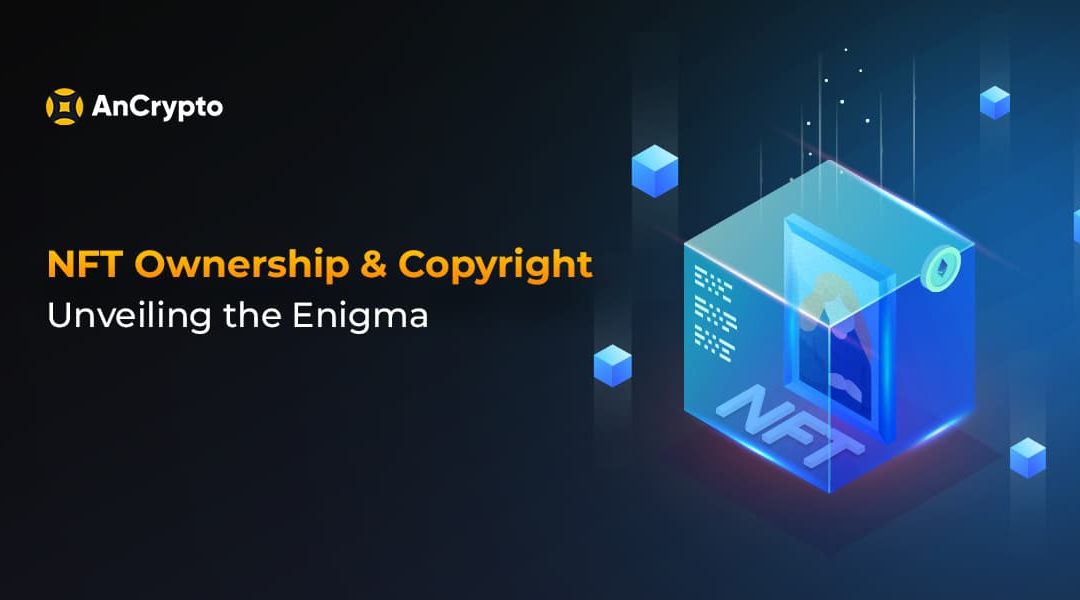
Apr 18, 2023
By unlocking the new realm of creativity, NFTs empower people to push their boundaries and monetize their work! But amidst all the hype, one question looms big: Are you the owner of your creations?
Buying Myself Back: When does a model own her image?
Reflecting on working in the modeling industry, Emily Ratajkowski – the famous model and writer, created her own NFT, putting effort into reviving the usage of her likeness.
Many media stories are on fire with reports of tweets, artworks, and other digital content making millions of dollars when represented as NFTs. But one thing you should know,
Artworks (digital or otherwise) are not equivalent to NFTs- just because something looks like a duck and quacks like a duck- not necessarily a duck!
Saying in simple words- NFT, a Non-Fungible Token is a tokenization of a digital asset.
Digital assets can represent anything from commodities to real estate, coins, shares, audio, video clips, in-game items, events, documents, and more.
And, Tokens are programmable digital units of value maintained on a digital ledger, aka Blockchain.
Anything can be digitalized ( converted into digital form) and minted as an NFT.
So, what makes the NFTs unique from the other digital tokens?
The main difference between Non-Fungible tokens and Fungible Tokens is interchangeability ( or lack thereof ). Fungible tokens such as cryptocurrencies are interchangeable with other tokens having identical units with a difference in value.
NFTs, on the other hand, have attributes of originalities and scarcity like unique ID, and metadata which no other token can replace.
The token is what makes an NFT unique!
Each NFT is unique, with its own set of strings ( called a hash) representing its unique position in the Blockchain, on which minted and the token into which embedded. Anyone can access and track NFT as it serves as Proof Of Ownership & Certificate Of Authenticity. However, NFT only governs the ownership of tokens, not underlying IP Rights.
NFT Ownership and Its Connection With Intellectual Property
Ownership of NFT and ownership of Intellectual property with which NFT is associated- have critical distinctions.
When someone buys NFT linked to particular content, they have not acquired the ownership of intellectual property rights of said content.
Under Section 106 of the U.S. Copyright Act- A copyright owner possesses exclusive rights to recreate, create derivative works of, perform, showcase, and distribute the copyrighted work.
In general, The purchaser of NFT does not get all the copyrights to recreate, make derivatives of, or distribute the original content or asset unless having explicit permission from the seller.
So, What Rights Does NFT Buyer Get?
There is widespread confusion that when a buyer purchases an NFT, they acquire the underlying asset and all its accompanying rights.
However, they are just purchasing the metadata associated with the asset, not the asset itself or its commercial rights.
Here Is An Example-
If you buy a Marvel comic book, you own a physical copy. You can read the book and sell it, however, owning a book does not grant you the right to create Marvel merchandise or use it to make Marvel movies.
A recent incident involving Spice DAO demonstrated potential pitfalls of its structure when it announced plans to create Dune NFTs after buying the popular Dune Bible Story for a whopping $ 3.04 Million, later discovered that they are not legally entitled to do so, leading to the public embarrassment.
To make ownership evident,
Dapper Labs, a popular NFT Platform, created an NFT license, available for anyone, stating that NFT sellers can choose to outline what rights the buyer can or cannot have.
The license distinguishes the content associated with NFT from the NFT token. It clarifies that after the purchaser receives-
- The personal license of use and display NFT.
- Commercial license to create NFT merchandise.
In other words, the NFT license only suggested the terms and conditions that sellers and buyers can follow together as they find appropriate.
Ownership rights to the buyer can vary across different NFT projects, as no such effective protocol in the blockchain network includes the copyright terms in the token itself. NFT ownership works on a smart contract- not readable by humans and does not include actual legal entitlements or relationships.
Only Creator owns the IP rights, meaning they can retain the copyrights of the asset sold, and the buyer is granted a license to use that asset.
NFT Ownership’s Terms and Conditions Before You Make A Purchase
It is not always easy to locate the Terms & Conditions demonstrating the NFT ownership rights.
Some projects like Cryptopunks and Azuki do not mention the ‘Terms & Conditions’ of NFT ownership on their website. Other projects may have contradictory terms or only display copyright terms in their Discord server.
Conduct thorough due diligence and understand the terms of the NFT purchase. Breaching terms and conditions can result in legal claims against the buyer.
NFTs & Smart contracts are undoubtedly revolutionizing the way we think about ownership rights the buyer gets with NFT, however, the legal effectiveness is still a debatable topic.
According to section 101(3) of the Copyright Ordinance (Cap. 101 of the Laws of Hong Kong), similar copyright statutes in other jurisdictions like the US, UK, and Australia, an assignment of copyright is only valid if it is
- in writing
- signed by or on behalf of the assignor
By staying informed about the legal landscape and seeking professional advice when necessary, buyers and sellers can make informed decisions about how to navigate this exciting new world of digital assets.
AnCrypto Wallet: Setting New Standards For NFT Management
Hereafter as you have secured your NFT, the next step is to manage it. Becoming a popular go-to choice for NFT lovers, AnCrypto – nft wallet makes instant sharing and receiving of NFTs simpler for everyone.
It’s just the scratch of the surface- the wallet will soon be releasing a game-changing feature that lets anyone send/receive NFT in Chats. Plus, with the support of multiple blockchains, the wallet is an ideal choice for anyone looking for easy NFT management.
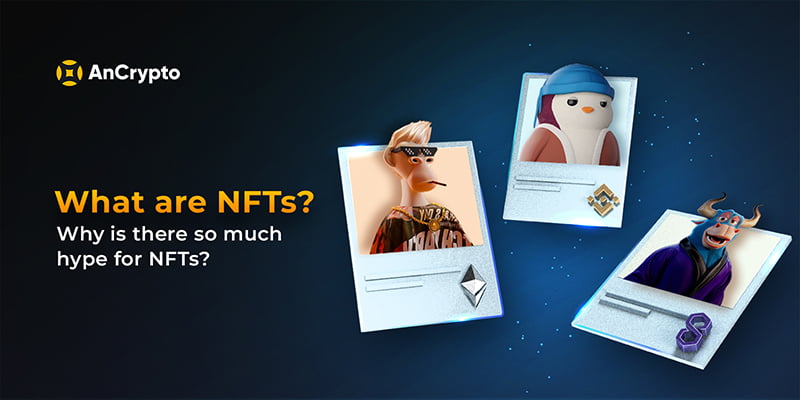
Feb 13, 2023
Imagine purchasing any real-world asset or digital artwork online and becoming the owner of it with a unique digital token.
Isn’t it amazing? Fortunately, this can be true with NFTs!
NFT aka Non-Fungible Tokens are unique cryptographic tokens with unique identification codes and metadata on the Blockchain network. These Tokens represent real-world objects and digital assets like games, art, or music in the form of digital assets. You can mint, buy, and sell NFTs online.
You cannot replace, modify, or exchange NFTs once created, which is why NFTs are gaining worldwide popularity. Also, one NFT cannot trade with the other NFTs as both values are incomparable; both are exclusively different.
How are NFTs created?
You can create NFT of anything possible to convert into a digital identity. For example – pictures, videos, music, games, selfies, graphics, tweets, GIFs, and more. After that, you can trade these NFTs online at the NFT marketplace to the visitors.
Let’s say, you are a painting artist; you can convert your painting into a digital asset and get complete ownership.
A user needs to pay Gas Fee(transaction fee) for using the Blockchain technology. Once NFT is created, no one can edit or modify it ( including the owner), and the buyer becomes the owner. Also, the owner can digitally sign the NFTs and save the information as NFT metadata.
Please Note: NFTs minting is a process to convert digital data into digital identifiers or crypto-collectibles recorded on the Blockchain. This data is stored in the distributed ledger, and can not be changed, deleted, or modified.
Process To Create NFTs
- Setup The Crypto Wallet
To create NFTs, a user needs to create an account in a crypto wallet.
- Choose the NFTs Marketplace
Select the NFT marketplace where you want to mint (create) NFTs. The most popular NFT marketplaces are OpenSea, Axie Marketplace, Nifty Gateway, and Foundation are some popular NFT marketplaces.
- Minting the NFT
Every Marketplace provides an easy guide to creating or minting NFT. Usually, you can start with a click on the “Create” button on the marketplace, choose the file to create NFT, and upload it. You can create single NFTs as well as a series of NFTs.
Blockchain Protocols used for creating NFTs are ( BEP-721, for single NFT), and (BEP-1155, for multiple NFTs).
Once you choose the digital file, you need to pay a Gas fee from the wallet to complete the minting process.
How do NFTs Work?
The unique identification of NFTs is verified by the Blockchain ledger. The first ever NFT was created on Ethereum Blockchain, and now it is available on other Blockchains like Binance Smart Chain, Tezos, Solana, and more. Just like Physical art, NFTs ownership can be bought or sold, and the price depends upon the market demand.
Problems involved in dealing with NFTs
For NFTs trading, one must clearly understand the involved technical process. When interacting with Blockchain, the user has to pay a Gas fee, or transaction fee for “Mining” or verifying the transaction. On every minted NFT, the user pays a Gas fee, even if the outcomes are meager. Some users prefer using bots to make sure that they grab the NFTs when minted to make the market less accessible for new users.
Platform To Buy NFTs
If you want to buy NFTs, you can purchase them from different platforms based on what type of NFT you want. The most popular platforms to buy NFTs are OpenSea, SuperRare, NiftyGateway, and AsyncArt.
Seller and purchaser must have a Crypto wallet to buy or sell NFTs. Buying NFT is a simple process, make sure you have funds in your account & you are all set to go. Popular platforms sell NFTs in auctions, so you need to bid to make a purchase. Prefer buying NFTs from the primary marketplaces as the product purchased in such places has better resale value than exchanges. The NFT price can go up to 10 times higher than the original when in demand.
However, the demand for art in the market can be hard to estimate. When you are purchasing from a secondary marketplace, you can compare the purchase to previously sold products.
Are NFTs The Next Big Thing?
Non-Fungible Tokens are now a prominent part of the Crypto market, however, driven by FOMO and scarcity. With increasing popularity, people are now willing to pay thousands of dollars to buy NFTs. At present, NFTs are mostly created to sell digital art and collectibles. In upcoming years, NFTs may be used for tokenizing real-world assets to bring more transparency and incorruptibility to the deals.
Creating NFTs for real estate can be highly beneficial. Although the future of NFTs is unclear, it holds the hidden power to bring transformation in the real & the internet world.
Send/Receive NFTs with the world’s first Chat & Pay Wallet AnCrypto
Embrace the revolutionary experience of sending/receiving NFTs using the world’s first Chat & Pay wallet AnCrypto. With our multi chain crypto wallet, you can easily buy, manage, and own NFTs from Ethereum, Binance, and Polygon blockchains, including ERC721 and ERC1155 tokens.
We understand that NFTs are more than just digital assets – a reflection of your digital identity and creativity. That’s why we made it easier than ever to own your piece of the digital world with our new Chat & Pay feature.
With just a few taps & you can quickly add NFTs to your AnCrypto wallet, send them to friends and family, or receive them as gifts. Our user-friendly interface makes it simple to navigate the world of NFTs and find the ones that speak to you.
Create your own digital space, showcase your personality, and be part of the NFT revolution. Get ready to add, send, and receive NFTs like never before with AnCrypto’s Chat & Pay wallet.











